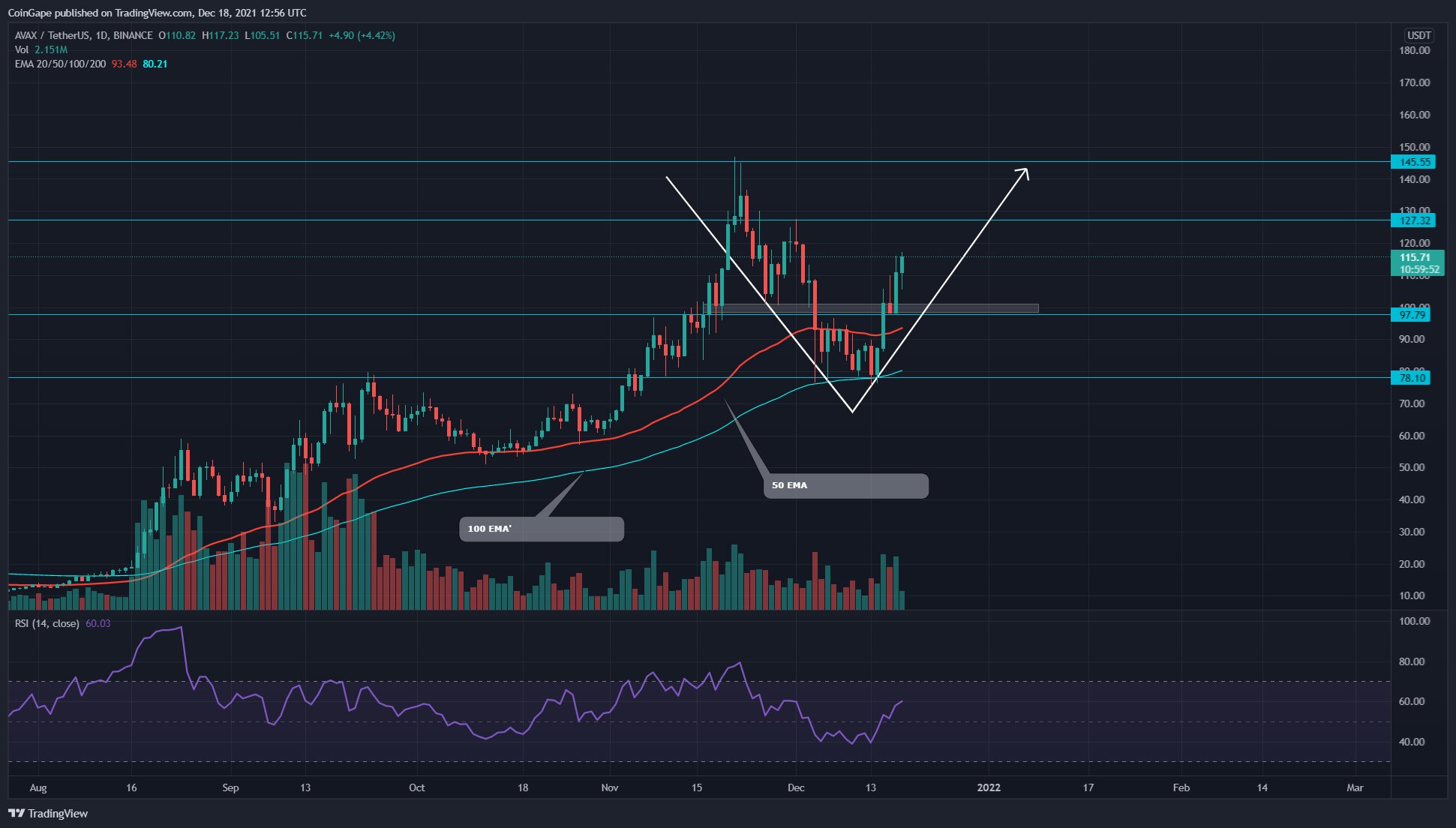Understanding Node in Crypto
When it comes to cryptocurrencies and blockchain technology, the concept of a “node” is fundamental. But what exactly is a node, and why is it important in the world of crypto?
In simple terms, a node can be thought of as a participant in a cryptocurrency network. It is a computer or device that maintains a copy of the entire blockchain, the decentralized ledger that records all transactions in a cryptocurrency. Each node plays a crucial role in ensuring the integrity and security of the network.
Nodes in the crypto network are interconnected and communicate with each other, forming a peer-to-peer network. This decentralized structure eliminates the need for a central authority and allows for distributed consensus and transparency.
The importance of nodes lies in their role in verifying transactions and maintaining the integrity of the blockchain. When a transaction occurs, each node on the network must validate and record that transaction. This validation process involves checking that the transaction follows the rules of the cryptocurrency and ensuring that the sender has sufficient funds.
Types of Nodes in Crypto:
1. Full Nodes: These nodes maintain a complete copy of the blockchain and participate in the consensus process. They validate, store, and propagate transactions and blocks throughout the network. Full nodes help to secure the network and ensure the accuracy of the blockchain.
2. Mining Nodes: These nodes, also known as miners, have specialized hardware and software to solve complex mathematical problems (proof-of-work) in order to add new blocks to the blockchain. Miners are rewarded with cryptocurrency for their computational efforts.
3. Lightweight Nodes: Also referred to as SPV (Simplified Payment Verification) nodes, lightweight nodes do not store the entire blockchain. Instead, they rely on full nodes to verify transactions and ensure the integrity of the network. Lightweight nodes are commonly used in mobile wallets and have lower resource requirements.
Setting Up a Node in Crypto:
Setting up a node in a cryptocurrency network typically involves installing the necessary software, synchronizing the blockchain, and ensuring a stable internet connection. The exact process may vary depending on the cryptocurrency and the specific node type.
The Role of Nodes in Consensus Mechanisms:
Nodes play a pivotal role in consensus mechanisms, which are the algorithms used to agree on the state of the blockchain. Consensus mechanisms, such as proof-of-work (PoW) and proof-of-stake (PoS), rely on nodes to validate transactions and secure the network.
Node Security and Risks in Crypto:
While nodes are instrumental in the functioning of the crypto network, they can also be vulnerable to security risks. Attacks on nodes, such as distributed denial-of-service (DDoS) attacks or malicious attempts to alter the blockchain, pose significant threats. Node operators must employ robust security measures to protect against these risks.
Common Challenges Faced by Nodes in Crypto:
Nodes can face various challenges, including limited bandwidth, storage capacity, and computational power. As the size of the blockchain increases, maintaining a full node becomes more resource-intensive. Additionally, network latency and synchronization issues can impact the performance of nodes.
Understanding the role and functionality of nodes is essential for anyone interested in cryptocurrencies and blockchain technology. By grasping the significance of nodes, we can appreciate the decentralized nature of crypto networks and the robust infrastructure that supports them.
What is a Node?
In the context of cryptocurrencies and blockchain technology, a node can be defined as a participant in a decentralized network that maintains a copy of the entire blockchain. It is essentially a computer or device that plays a crucial role in the security and integrity of the network.
A node acts as a point of connection within the network, enabling the communication and transfer of information between different participants. Each node has a unique identifier and is interconnected with other nodes in a peer-to-peer fashion.
Nodes in a crypto network serve multiple purposes, but their primary function is to validate and verify transactions. When a transaction occurs, it gets broadcasted to the network, and every node receives a copy of it. Nodes then carry out verification checks to ensure the transaction is valid, adhering to the rules of the specific cryptocurrency.
Furthermore, nodes maintain a complete copy of the blockchain, which is the decentralized ledger that records all transactions in chronological order. This allows nodes to independently validate the entire transaction history, preventing fraudulent activities and maintaining the accuracy of the blockchain.
Types of Nodes in Crypto:
1. Full Nodes: Full nodes store the entire blockchain and participate in the consensus process. They validate transactions, verify the integrity of the blockchain, and propagate information to other nodes. Full nodes play a vital role in maintaining the security and decentralization of the network.
2. Mining Nodes: Mining nodes are responsible for validating and adding new blocks to the blockchain. These specialized nodes use computational power to solve complex mathematical problems (proof-of-work) or stake their cryptocurrency holdings (proof-of-stake) to secure the network and earn rewards.
3. Lightweight Nodes: Also known as SPV (Simplified Payment Verification) nodes, lightweight nodes do not store the entire blockchain. Instead, they rely on full nodes to verify transactions. Lightweight nodes require fewer resources and are commonly used in mobile wallets, enabling users to access the blockchain without storing a complete copy.
Setting Up a Node in Crypto:
Setting up a node in a crypto network typically involves installing the required software, establishing network connections, and synchronizing with the blockchain. The specific steps may vary depending on the cryptocurrency and the type of node desired. Running a node can require computational resources, stable internet connectivity, and sufficient storage space.
Understanding the concept of a node is essential when delving into the world of cryptocurrencies and blockchain technology. By serving as integral components of decentralized networks, nodes contribute to the security, transparency, and consensus mechanisms that power cryptocurrencies.
Nodes in the Crypto Network
Nodes are integral components of the crypto network, enabling the decentralized functioning and security of cryptocurrencies. They form the foundation upon which blockchain technology is built, ensuring the accuracy, transparency, and reliability of transactions. Let’s explore the role of nodes in more detail.
Nodes in the crypto network are connected through a peer-to-peer protocol, meaning that they communicate directly with each other without the need for intermediaries. This decentralized structure eliminates the dependence on a central authority, promoting transparency and trust among participants.
Each node in the network maintains a copy of the blockchain, the distributed ledger that records all transaction history. This redundancy ensures that even if one or more nodes fail or become compromised, the network can still function smoothly without any single point of failure.
The main functions of nodes in the crypto network include:
Transaction Validation: When a transaction is initiated, it is broadcasted to all nodes in the network. Each node independently verifies the validity of the transaction by checking if the sender has sufficient funds, if the transaction adheres to the rules of the cryptocurrency, and if it hasn’t already been spent. Through this verification process, nodes prevent double-spending and maintain the integrity of the blockchain.
Consensus Building: Nodes play a crucial role in the consensus mechanisms of cryptocurrencies. Consensus mechanisms are algorithms that determine how agreement is reached on the state of the blockchain. Nodes participate in this process by validating transactions, proposing new blocks, and reaching a common agreement on the order of transactions. This decentralized consensus ensures that all nodes in the network have an aligned view of the blockchain.
Propagating Transactions and Blocks: Nodes disseminate new transactions and blocks throughout the network. By sharing this information, nodes ensure that all participants have the most up-to-date copy of the blockchain. This propagating function is necessary to maintain a synchronized and consistent view of the distributed ledger.
Network Security: Nodes contribute to the security of the crypto network by making it more resilient to attacks. As each node maintains a copy of the blockchain, it becomes difficult for malicious actors to manipulate the data. Additionally, through consensus mechanisms, nodes collectively determine the valid state of the blockchain, making it challenging for any single entity to disrupt or control the network.
Overall, nodes are the backbone of the crypto network, enabling the decentralized nature, security, and transparency of cryptocurrencies. By participating in transaction validation, consensus building, and network propagation, nodes ensure the integrity and reliability of the blockchain. Understanding the role and significance of nodes is essential for grasping the full potential and power of blockchain technology.
Why Are Nodes Important?
Nodes play a crucial role in the functioning and success of cryptocurrencies and blockchain networks. They are essential components that ensure the integrity, security, and decentralization of the entire system. Let’s explore why nodes are so important in the world of crypto.
Decentralization: One of the key benefits of cryptocurrencies is their decentralized nature, and nodes are at the heart of this decentralization. By participating in a peer-to-peer network, nodes eliminate the need for intermediaries or central authorities. This distributed structure enhances transparency, removes single points of failure, and empowers individuals to have control over their own financial transactions.
Transaction Validation: Nodes are responsible for verifying and validating transactions that occur within the blockchain network. By independently confirming the validity and authenticity of each transaction, nodes prevent fraudulent or malicious activities such as double-spending or tampering. This validation process ensures that only legitimate transactions are added to the blockchain, maintaining the accuracy and trustworthiness of the entire system.
Consensus Building: Nodes play a critical role in consensus mechanisms, which are algorithms used to reach agreement on the state of the blockchain. Through consensus mechanisms like proof-of-work (PoW) or proof-of-stake (PoS), nodes collectively determine the next valid block and ensure its inclusion in the blockchain. Consensus building enables the network to achieve agreement and prevents any single entity from dominating the decision-making process.
Network Security: Nodes contribute to the security of the crypto network by detecting and preventing attacks. As each node maintains a copy of the blockchain, it becomes highly challenging for an attacker to manipulate the data without consensus from the majority of nodes. This distributed security model makes it more resilient against hacking attempts and ensures the integrity of the transactions and the overall network.
Redundancy and Fault-Tolerance: Nodes provide redundancy in the system by maintaining copies of the blockchain. This redundancy makes the network more fault-tolerant, as even if some nodes go offline or become compromised, the network can still continue to function. The distributed nature of nodes ensures that there is no single point of failure, increasing the overall resilience and reliability of the system.
Continued Network Operation: Since nodes maintain a complete copy of the blockchain and participate in transaction validation, even if some nodes drop out or new nodes join the network, the network can continue to operate smoothly. This ability to maintain uninterrupted operation is a key aspect of the robustness and sustainability of crypto networks.
In summary, nodes are essential for the successful operation and growth of cryptocurrencies and blockchain networks. Their role in decentralization, transaction validation, consensus building, network security, redundancy, fault-tolerance, and continuous operation ensures the integrity, security, and stability of the entire ecosystem. Understanding the importance of nodes helps us appreciate the power and potential of blockchain technology and its ability to revolutionize various industries.
Types of Nodes in Crypto
In the world of cryptocurrencies, there are different types of nodes that serve various functions within the network. Each type of node has specific roles and responsibilities that contribute to the overall operation and security of the blockchain. Let’s explore the different types of nodes in crypto:
1. Full Nodes: Full nodes are the backbone of the blockchain network. These nodes maintain a complete copy of the entire blockchain and participate in the consensus process. They validate, store, and propagate transactions and blocks throughout the network. Full nodes play a crucial role in securing the network, ensuring the accuracy of the blockchain, and maintaining decentralization.
2. Mining Nodes: Mining nodes, also known as miners, are responsible for adding new blocks to the blockchain. These nodes use specialized hardware and software to solve complex mathematical problems (proof-of-work) or stake their cryptocurrency holdings (proof-of-stake). By doing so, mining nodes contribute to the consensus mechanism and earn rewards for their computational efforts.
3. Lightweight Nodes: Lightweight nodes, also known as Simplified Payment Verification (SPV) nodes, do not store the entire blockchain. Instead, they rely on full nodes to verify transactions and ensure the integrity of the network. Lightweight nodes require fewer resources compared to full nodes and are commonly used in mobile wallets. They provide a convenient way for users to access the blockchain without compromising storage capacity.
4. Masternodes: Masternodes are a specific type of node used in some cryptocurrencies. These nodes serve additional functions beyond transaction validation and blockchain maintenance. Masternodes provide advanced features such as instant transactions, decentralized voting, and governance. They require a certain amount of cryptocurrency to be held as collateral, and in return, owners of masternodes receive rewards for their participation in network consensus and governance.
5. Validator Nodes: Validator nodes play a crucial role in consensus mechanisms such as proof-of-stake (PoS). These nodes are responsible for validating transactions, proposing the next block, and participating in the block validation process. Validator nodes stake their cryptocurrency as collateral, which serves as an incentive to follow the consensus rules faithfully. By actively participating in the consensus mechanism, validator nodes help secure the network and earn rewards.
6. Archive Nodes: Archive nodes store and maintain a comprehensive record of the entire blockchain, including every historical transaction. These nodes are often used for research, analysis, and auditing purposes as they provide access to the complete transaction history of the cryptocurrency. Archive nodes require substantial storage capabilities due to the extensive data they maintain.
The specific types of nodes in a cryptocurrency network may vary depending on the blockchain’s design and the consensus mechanism used. It’s important to note that some cryptocurrencies may have additional node types or variations tailored to their specific needs and functionalities.
Understanding the different types of nodes in the crypto network helps to appreciate the diversity of roles and functions that contribute to the overall operation of the blockchain. Each type of node serves a specific purpose and contributes to the decentralized, secure, and transparent nature of cryptocurrencies.
How Do Nodes Work in Crypto?
Nodes play a crucial role in the operation of cryptocurrencies, serving as the building blocks of the decentralized network. Understanding how nodes work is essential to comprehend the inner workings of blockchain technology. Let’s delve into how nodes function in the world of crypto.
1. Blockchain Synchronization: Nodes in a cryptocurrency network synchronize with each other to maintain a consistent and up-to-date copy of the blockchain. When a new node joins the network, it connects to existing nodes to download the entire blockchain history. Through a process called the consensus algorithm, nodes agree on the valid state of the blockchain to ensure that all participants have a consistent view of the transaction history.
2. Transaction Validation: Nodes validate transactions by independently verifying the authenticity and integrity of each transaction. They check if the transaction adheres to the rules of the blockchain and if the sender has sufficient funds. This validation process ensures that only valid transactions are recorded on the blockchain and helps prevent double-spending or tampering.
3. Propagation of Information: Nodes propagate new transactions and blocks throughout the network. When a transaction is initiated, it gets broadcasted to all nodes, allowing them to update their local copies of the blockchain. This propagation ensures that all nodes have the most up-to-date information and promotes the decentralization of decision-making and validation processes.
4. Consensus Building: Nodes play a vital role in achieving consensus within the network. Consensus mechanisms, such as proof-of-work (PoW) or proof-of-stake (PoS), rely on nodes to validate transactions and propose new blocks. Through consensus algorithms, nodes collectively agree on the order and validity of transactions, ensuring that all participants have a synchronized view of the blockchain.
5. Security and Network Maintenance: Nodes contribute to the security and maintenance of the crypto network. Each node maintains a copy of the blockchain, making it challenging for an attacker to manipulate the data without consensus from the majority of nodes. Additionally, by participating in transaction validation and consensus building, nodes help ensure the integrity and security of the network.
6. Redundancy and Fault-Tolerance: Nodes provide redundancy in the system by maintaining multiple copies of the blockchain. This redundancy makes the network more fault-tolerant, as even if some nodes fail or drop out, the network can continue to function and maintain consensus. The distributed nature of nodes ensures that there is no single point of failure, enhancing the overall reliability and resilience of the blockchain.
7. Participation in Network Governance: In some blockchain networks, nodes may also participate in network governance. They can vote on proposals, contribute to decision-making processes, and shape the future direction of the blockchain. This democratic participation enables nodes to have a say in the evolution and development of the cryptocurrency ecosystem.
By performing these functions, nodes collectively create a secure, transparent, and decentralized network for cryptocurrencies. Each node plays an important role in maintaining the stability and integrity of the blockchain system, making it resilient to attacks and ensuring the trustworthiness of transactions.
Understanding how nodes work in crypto is a foundational element in comprehending the power and potential of blockchain technology. By serving as validators, consensus builders, and network maintainers, nodes contribute to the decentralized and inclusive nature of cryptocurrencies.
How to Set Up a Node in Crypto
If you’re interested in participating in a cryptocurrency network by running a node, it’s important to understand the steps involved in setting up your own node. While the specific process may vary depending on the cryptocurrency, here are some general steps to help you get started:
1. Select a Cryptocurrency: Choose the cryptocurrency network you want to set up a node for. Research the project’s official documentation to understand the technical requirements and recommendations for running a node.
2. Hardware and Software Requirements: Determine the hardware and software requirements for the chosen cryptocurrency. Typically, you will need a dedicated computer or server with enough processing power, storage capacity, and memory to handle the demands of the node.
3. Install the Node Software: Download and install the official node software provided by the cryptocurrency project. Ensure that you are obtaining the software from trusted sources to prevent any security risks or malicious software.
4. Synchronize with the Blockchain: After installing the node software, the next step is to synchronize your node with the blockchain network. This process involves downloading the entire blockchain history, which can take some time, especially if the blockchain is large.
5. Configure the Node: Once your node is synchronized with the blockchain, you will need to configure the specific settings and parameters of the node software. This may include specifying the network connection details, setting security options, and indicating any specific preferences or features you want to enable.
6. Connect to the Network: Connect your node to the cryptocurrency network by establishing network connections with other nodes. This connection allows your node to receive new transactions, propagate information, and participate in the consensus process.
7. Maintain and Monitor the Node: Once your node is up and running, it is essential to regularly maintain and monitor its operation. This includes regularly updating the node software to the latest version, monitoring performance metrics, and ensuring the node is properly connected to the network.
8. Contribute to the Network: By running a node, you are actively contributing to the security and decentralization of the cryptocurrency network. Your node will validate transactions, propagate information, and assist in maintaining consensus.
It’s important to note that running a node involves certain resource requirements, including computational power, storage capacity, and stable internet connectivity. It’s also crucial to ensure the security of your node by implementing best practices such as using strong passwords, regularly updating software, and employing appropriate firewall and security measures.
Setting up a node in a cryptocurrency network requires technical knowledge and the willingness to dedicate resources to contribute to the network’s operation. However, running a node can be a rewarding experience, providing you with a deeper understanding of the technology, the ability to actively participate in network consensus, and potentially earning rewards for your contributions.
The Role of Nodes in Consensus Mechanisms
Consensus mechanisms are the algorithms used to achieve agreement and validate transactions in a cryptocurrency network. Nodes play a critical role in these consensus mechanisms, contributing to the security, integrity, and decentralized nature of the blockchain. Let’s explore the role of nodes in consensus mechanisms:
Proof of Work (PoW): In a proof-of-work consensus mechanism, nodes, known as miners, compete to solve complex mathematical problems. This computational effort confirms transactions and adds new blocks to the blockchain. Nodes in the network validate the solution provided by the miner, ensuring that the work is legitimate and following the rules of the cryptocurrency.
Proof of Stake (PoS): In a proof-of-stake consensus mechanism, nodes, known as validators, are chosen to validate new blocks based on the number of coins they hold and “stake” in the network. Validators are selected randomly or through a deterministic algorithm, with a higher stake increasing the chances of being selected. These nodes commit their resources as collateral, providing an incentive to follow the rules and maintain consensus.
Delegated Proof of Stake (DPoS): Delegated proof of stake is a consensus mechanism where nodes, known as delegates, are elected by token holders to validate transactions and create new blocks. These delegates take turns producing blocks on behalf of the network, with the weight of their votes determined by the amount of tokens held. Not all nodes in the network actively participate in block production, but they can still contribute to maintaining consensus through voting for delegates.
Practical Byzantine Fault Tolerance (PBFT): PBFT is a consensus mechanism designed for permissioned blockchain networks. Nodes, known as replicas, work together to reach consensus on the validity and sequence of transactions. In PBFT, a certain number of nodes must agree on the order of transactions before they are considered confirmed and added to the blockchain. This mechanism is optimized for performance and is commonly used in private or consortium blockchains.
Byzantine Fault Tolerant (BFT): BFT is a consensus mechanism designed to tolerate malicious behavior or system failures. Nodes in the network work together to agree on the validity and order of transactions, ensuring that the blockchain remains secure and consistent. BFT-based consensus mechanisms require nodes to communicate and agree on transactions even in the presence of faulty or malicious nodes.
Nodes in the network verify, validate, and propagate transactions, allowing the consensus mechanism to operate smoothly. Each node independently checks the validity of transactions, ensuring that they adhere to the rules of the specific consensus mechanism. Through this validation process, nodes collectively determine the order and integrity of transactions, ensuring a consistent view of the blockchain among all participating nodes.
Consensus mechanisms rely on the distributed nature of nodes to prevent any single entity from controlling the network. Nodes contribute to the decentralized nature of the blockchain, making it resilient against attacks and enabling a trustless and transparent system.
By participating in consensus mechanisms, nodes in a cryptocurrency network help to maintain the integrity and security of the blockchain. They play an integral role in validating transactions, reaching agreement on the order of transactions, and securing the network from potential attacks. Understanding the role of nodes in consensus mechanisms is essential to comprehend the decentralized nature and trustworthiness of cryptocurrencies.
Node Security and Risks in Crypto
While nodes are essential components of the crypto ecosystem, they are not immune to security risks. Node operators must be aware of potential vulnerabilities and take appropriate measures to secure their nodes and the network as a whole. Let’s explore the security risks and measures associated with nodes in crypto:
1. Distributed Denial-of-Service (DDoS) Attacks: Nodes are susceptible to DDoS attacks, where malicious actors overwhelm the node with a flood of requests, causing it to become unresponsive. To mitigate this risk, node operators can employ DDoS protection services, limit incoming connections, or distribute their nodes across multiple servers or IP addresses.
2. Sybil Attacks: Sybil attacks occur when an attacker creates multiple fake identities or nodes to gain control over the network. These fake nodes can collaborate to manipulate the consensus algorithm and disrupt the integrity of the blockchain. Node operators can mitigate the risk of Sybil attacks by implementing identity verification mechanisms or using reputation systems to identify and exclude suspicious nodes.
3. Malware and Hacking: Nodes can be vulnerable to malware and hacking attempts. Attackers may attempt to exploit software vulnerabilities or gain unauthorized access to the node. Node operators must ensure that their node software is up to date with the latest security patches and employ robust security measures such as firewalls, intrusion detection systems, and regular security audits.
4. Insider Attacks: Insider attacks occur when a person with authorized access to the node uses that access maliciously. Node operators should exercise caution when granting access to their node and implement strict security protocols. Regular monitoring and auditing of authorized users can help detect and prevent insider attacks.
5. Physical Security: Physical security is important for nodes that are hosted on dedicated hardware. Node operators should protect their servers and hardware from unauthorized access, theft, or physical damage. This can be achieved by employing measures such as secure hosting facilities, restricted access controls, and surveillance systems.
6. Software Vulnerabilities: Nodes may be vulnerable to software bugs and vulnerabilities that could be exploited by attackers. Regularly updating the node software to the latest versions, following best coding practices, and conducting security audits can help mitigate the risk of software vulnerabilities.
7. Social Engineering Attacks: Social engineering attacks involve manipulating individuals to gain unauthorized access to their nodes or sensitive information. Node operators should be cautious of phishing attempts, suspicious requests for access or information, and should educate themselves about common social engineering tactics to prevent falling victim to such attacks.
Securing nodes is crucial for maintaining the integrity, security, and stability of the cryptocurrency network. By implementing robust security measures and staying vigilant against potential risks, node operators can contribute to a stronger and more resilient blockchain network.
Common Challenges Faced by Nodes in Crypto
While nodes play a vital role in the functioning of crypto networks, they also face various challenges that can impact their performance and overall operation. Understanding these challenges is crucial for node operators and participants in the crypto ecosystem. Let’s explore some of the common challenges faced by nodes in crypto:
1. Bandwidth and Latency: Nodes rely on network connectivity to communicate with other nodes and receive transactions. Limited bandwidth or high latency can impact the speed at which nodes propagate information, potentially causing delays in transaction validation and block propagation. Node operators must ensure sufficient bandwidth and low-latency connections to maintain efficient communication with the network.
2. Storage Capacity: The blockchain’s size grows over time as new transactions and blocks are added. Nodes must continuously expand their storage capacity to accommodate the growing blockchain. Limited storage capacity can restrict a node’s ability to store a complete copy of the blockchain or require regular pruning of older data, which may impact the node’s operability and participation in the network.
3. Computational Power: Certain consensus mechanisms, such as proof-of-work, require significant computational power for the mining or validation process. Nodes with limited computational resources may struggle to participate effectively in such consensus mechanisms, leading to slower transaction validation or reduced chances of earning mining rewards.
4. Security Risks: Nodes are susceptible to various security risks, as discussed in the previous section. Malware, hacking attempts, and social engineering attacks can compromise the integrity and security of a node. Implementing robust security measures, staying updated with security patches, and following best practices can help mitigate these risks.
5. Network Synchronization: Nodes must synchronize with the blockchain network to ensure they have the most up-to-date copy of the blockchain. Synchronization challenges can arise when a node falls out of sync, requiring it to catch up with the latest transactions and blocks. Large blockchain sizes or network interruptions can prolong the synchronization process, impacting a node’s ability to actively participate in the network.
6. Scalability: As the number of participants and transactions in a cryptocurrency network increases, scalability becomes a challenge. Nodes must be able to handle the growing demands of the network, including processing and validating transactions at a faster pace. Insufficient scalability can lead to bottlenecks, slower transaction speeds, and decreased network efficiency.
7. Network Governance: In decentralized networks, nodes often play a role in network governance by participating in voting and decision-making processes. Achieving consensus among nodes with different interests or conflicting opinions can be a challenge. Resolving governance-related challenges requires effective communication, compromise, and consensus-building mechanisms within the network.
Overcoming these challenges requires continuous improvement, adaptation, and collaboration within the crypto ecosystem. Node operators, developers, and network participants work together to address these obstacles, ensuring the sustainable growth and resilience of the crypto network.
Conclusion
Nodes are the backbone of the crypto ecosystem, playing a vital role in the security, integrity, and decentralization of cryptocurrencies and blockchain networks. Understanding the functions and importance of nodes is fundamental to grasping the power and potential of blockchain technology.
Nodes perform various tasks, including transaction validation, consensus building, information propagation, and network security. They contribute to the trustworthiness, transparency, and resilience of cryptocurrencies by independently verifying transactions, participating in consensus mechanisms, and maintaining a copy of the blockchain. Nodes ensure that the network operates in a decentralized manner, free from centralized control or single points of failure.
Despite their significance, nodes face challenges such as limited bandwidth, storage capacity, computational power, and security risks. Node operators must address these challenges by ensuring adequate resources, implementing robust security measures, staying updated with software patches, and participating in network governance processes.
Setting up a node in a cryptocurrency network requires technical knowledge, dedicated hardware, and a commitment to actively contribute to the network. By running a node, individuals can participate in the validation of transactions, propagation of information, and the overall functioning of the blockchain system. It provides an opportunity to contribute to the decentralized ecosystem, support network security, and earn rewards for their participation and computational efforts.
The role of nodes is vital in establishing trust, ensuring the integrity of transactions, and maintaining the decentralized nature of cryptocurrencies. By embracing the challenges and understanding the significance of nodes, the crypto community can continue to strengthen and advance the adoption of blockchain technology across various industries.

























